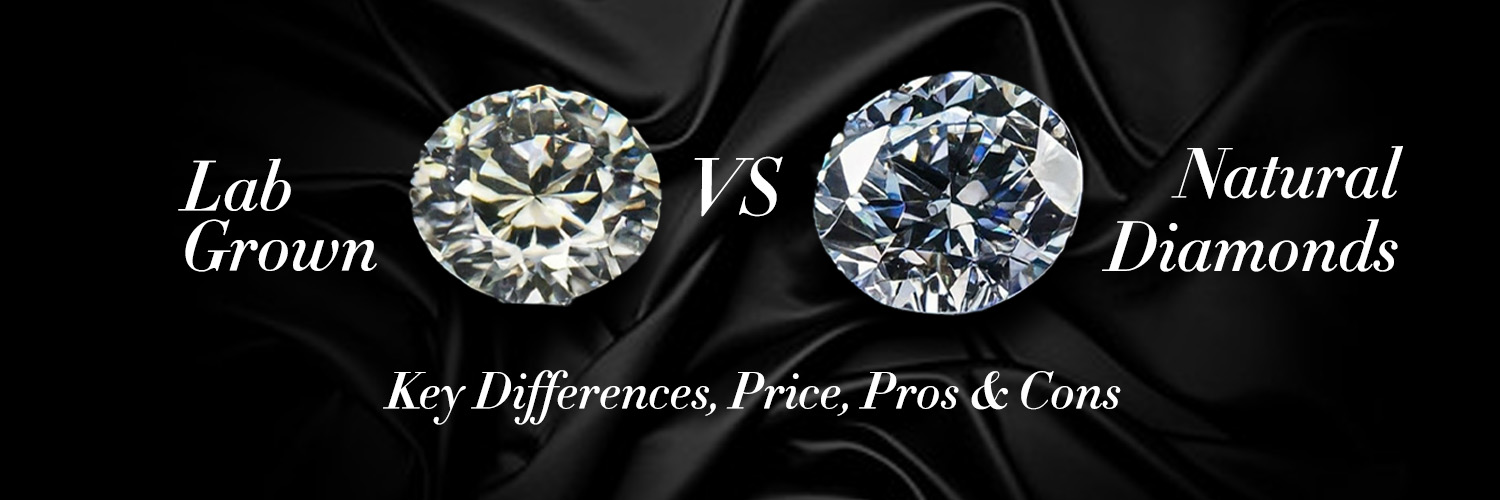
Lab-Grown vs. Natural Diamonds
Diamonds have long been symbols of luxury, love, and commitment. However, with technological advancements, lab-grown diamonds have emerged as an alternative to natural diamonds, sparking debates among buyers. If you’re considering purchasing a diamond, understanding the differences between lab-grown and natural diamonds, their pricing, and their pros and cons can help you make an informed decision.
What Are Lab-Grown and Natural Diamonds?
Natural Diamonds
Natural diamonds are formed deep within the Earth over billions of years under extreme heat and pressure. These diamonds are mined from the Earth’s crust and undergo cutting and polishing before reaching the market. Their rarity and formation process contribute to their high value.
Lab-Grown Diamonds
Lab-grown diamonds, also known as synthetic or man-made diamonds, are created in controlled environments using advanced technological processes like high pressure, high temperature (HPHT) and Chemical Vapor Deposition (CVD). These diamonds have the same physical, chemical, and optical properties as natural diamonds but are produced in a fraction of the time.
Price Difference: Lab-Grown vs. Natural Diamonds
One of the key differences between lab-grown and natural diamonds is pricing.
- Natural Diamonds are significantly more expensive due to their rarity and mining costs. The price can vary depending on factors such as carat, cut, clarity, and color.
- Lab-grown diamonds are 30-70% cheaper than natural diamonds of the same quality. Since they are produced in laboratories with minimal environmental impact, they are more affordable and accessible to a broader range of consumers.
Pros and Cons of Lab-Grown and Natural Diamonds
Feature | Lab-Grown Diamonds | Natural Diamonds |
Price | 30-70% cheaper | More expensive |
Formation | Created in weeks to months | Formed over billions of years |
Durability | Identical to natural diamonds (10 on the Mohs scale) | Highly durable (10 on the Mohs scale) |
Environmental Impact | More sustainable, uses fewer resources | Mining can cause environmental damage |
Rarity & Value | Less rare, resale value lower | High rarity, better resale value |
Availability | Easily available in various sizes and cuts | Limited availability based on mining |
Ethical Sourcing | 100% conflict-free | Some natural diamonds are associated with unethical mining practices |
Which One Should You Choose?
- If you want a more affordable, ethical, and environmentally friendly option, a lab-grown diamond is a great choice.
- If you prefer a natural, rare, and valuable diamond with a higher resale price, then a natural diamond is the better investment.
Ultimately, both options have their merits, and the best choice depends on your budget, ethical considerations, and personal preferences. Whether you choose a lab-grown or natural diamond, both shine with beauty and brilliance!
Have something in mind? Let us call you back.
Get in touch
Get in touch
Information
COPYRIGHT © 2025 BABITA AGRAWAL JEWELLERY